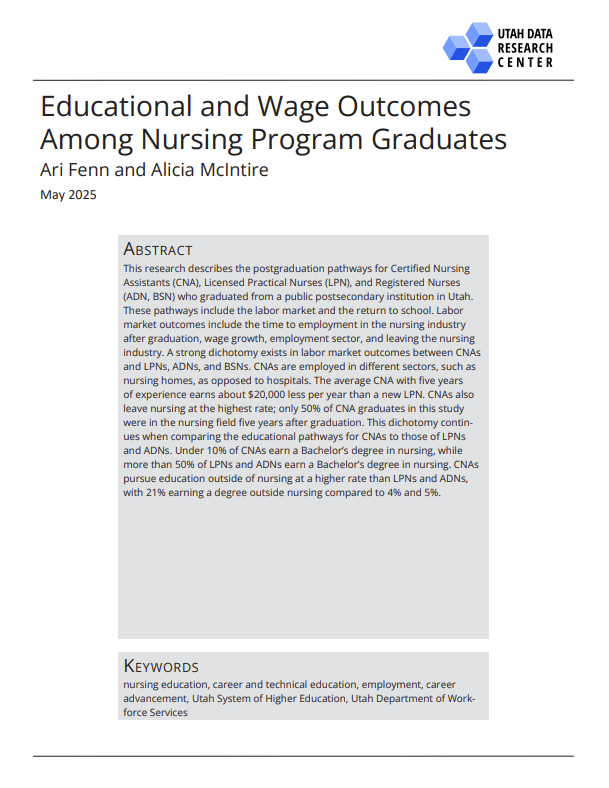Overview
Understanding the postgraduation pathways for nurses can lead to more informed decisions for those concerned with nursing education and the nursing labor market. This research describes Utah’s postgraduation labor market and continuing education pathways for postsecondary award holders from a nursing major. This project focuses on pathways after earning an initial nursing award from a public postsecondary institution in Utah. The pathways for advanced practice nurses are beyond the scope of this work. This research shows postgraduation wage, employment, and educational dynamics for different initial degrees. Finally, this research addresses early exit from the nursing industry. By demonstrating what happens for nurses postgraduation, this research will allow interested parties to make informed decisions regarding policy, advocacy, and career choices regardless of initial nursing award.
This study covers Certified Nurse Assistants (CNA), Licensed Practical Nurses (LPN), Associate Degree Registered Nurses (ADN), and Bachelor’s Degree Registered Nurses (BSN). The education requirements differ for each type of nursing award, and those differences influence labor market and continuing educational pathways.
The population of interest is all graduates from nursing fields from public technical colleges and degree-granting institutions in Utah between 2011 and 2020. This data came from the Utah System of Higher Education (USHE). The Utah Data Research Center’s (UDRC) matching algorithm matched the nursing program graduates with the Utah Department of Workforce Services (DWS) unemployment insurance (UI) wage data. The USHE data contain major, defined by the Classification of Instructional Program (CIP), award level, defined by the Integrated Postsecondary Education Data System (IPEDS), completion date, gender, race or ethnicity, age, and, when appropriate, re-enrollment date or semester. DWS UI data contain wages, the year and quarter of earned wages, the employer name, and the North American Industry Classification System (NAICS) code.
Summary of Findings
Finding 2: Successively higher nursing awards are associated with better labor market outcomes.


